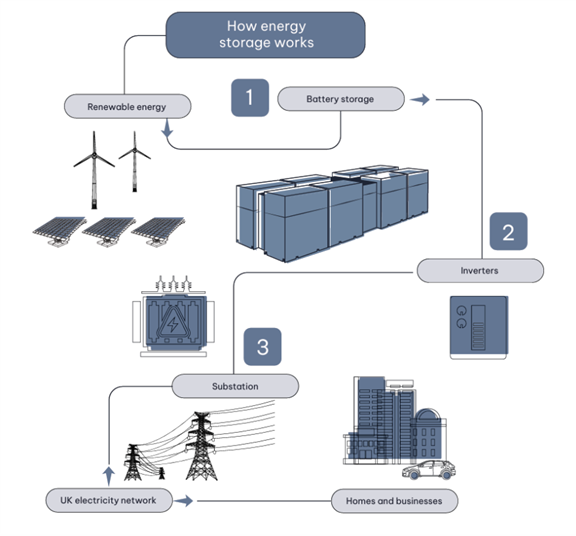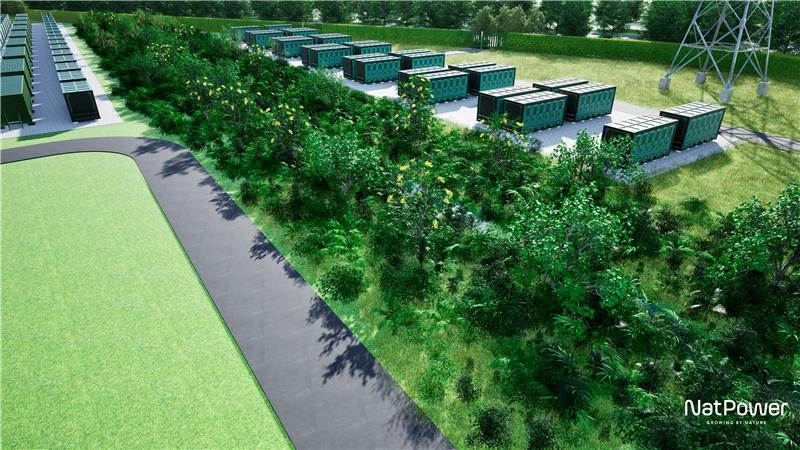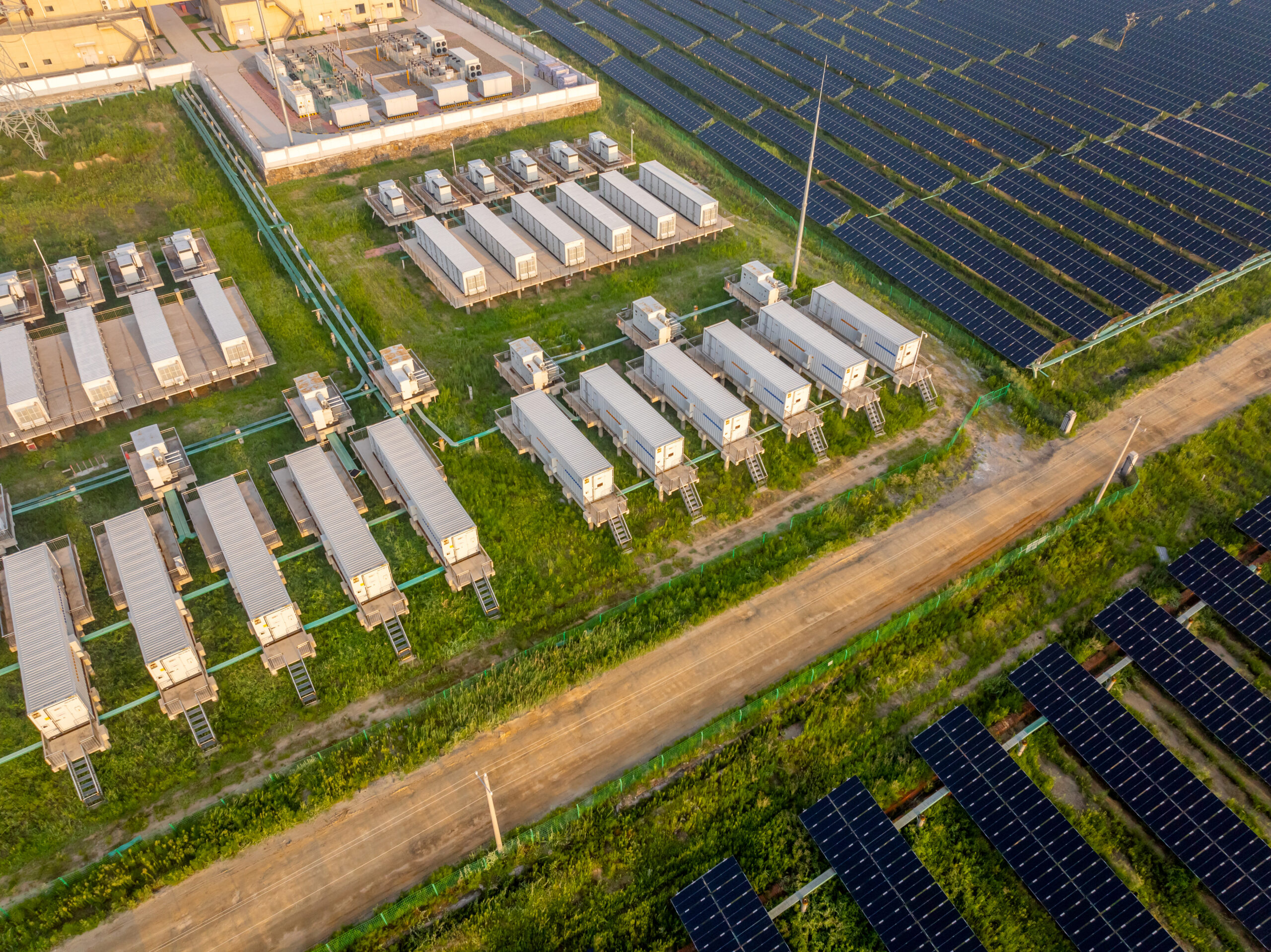BESS, or Battery Energy Storage Systems, are a type of storage for renewable energy generated by sources like wind and solar. BESS projects allow for renewable energy to be stored at times of high production and released back to the grid at a later time for use, and to balance the grid so that we always have a steady and reliable supply of energy.
Why is BESS needed?
BESS projects play an important role in ensuring energy security for a UK powered by renewables. The benefit of BESS projects in the UK is that we can maximise renewable energy generation and utilisation. Without storage options like BESS, any renewable energy not used at the point of production will be wasted. What’s more, without ample energy in storage during times when renewable energy generation is low, we will need to rely on alternative energy sources like fossil fuels.
For example, think about prime-time television in winter months here in the UK; the sun has already set and solar energy production will be low, but much of the country will be using electricity to watch television. With BESS, during times of the day like this we can rely on the supply of electricity stored from periods of sunlight earlier in the day. This reduces the need to rely on fossil fuels during periods of low generation of renewable energy.
BESS projects also work to support the increase of renewable energy generation projects in the UK, helping us to utilise more renewable energy than ever before. They do this by creating capacity for storage, so that with increased generation, we are better equipped with infrastructure to distribute the delivery of electricity to match demand. Without storage solutions like BESS, increased generation would be helpful, but we would see a lot of the additional energy generated going to waste.
How do Battery Energy Storage Projects work?
Battery systems store and deliver electricity as Direct Current (DC) while most electrical systems operate on Alternating Current (AC). BESS projects include inverters to change the electricity from AC to DC and back.
A substation connects the project into the National Grid. A substation typically appears as a collection of electrical equipment and towers, sometimes connecting to overhead powerlines by cabling.

NatPower UK BESS contain a few components, all housed in units similar in size and shape to shipping containers, about 12m in length and 2m-3m high:
– Lithium Iron Phosphate batteries store energy ready to be supplied when needed. These are stacked on top of each other to form a battery rack and are connected to reach the required voltage and current of the BESS. These are a tried and tested technology that is commonly used in our day-to-day lives, such as in smartphones.
– The battery management system is the brain of the BESS and works to safeguard the batteries from damage in various scenarios. It constantly monitors the state of charge, state of health, voltage, temperature and current. It ensures the safety and longevity of the batteries.
– A heating, ventilation and air conditioning system controls the operating temperature within the system’s enclosure and ensures good air distribution. This prevents the batteries from overheating, which in turn means that the batteries last longer and perform better.
– A fire suppression system is built into the design of the BESS and would only operate in the unlikely event of overheating of the batteries.

Separate to the BESS itself, NatPower UK project sites include:
– Security: NatPower UK BESS projects and substations are secured by metal security fencing and monitored by CCTV systems which face the battery storage and substation areas. We use motion sensor lights to keep lighting to a minimum while keeping the project secure.
– Landscaping: Our projects include landscaping to screen the BESS from view, protect the local landscape, and enhance local biodiversity.
– BNG Activities: We aspire to exceed the minimum requirement for 10% Biodiversity Net Gain at new developments in England by as much as possible at each of our BESS project sites. This means our BESS projects will include BNG activities like the creation of wetland areas and the installation of nesting boxes for barn owls, kestrels and bats.
At NatPower UK, we are working to deliver BESS projects with grid connections to support the UK’s transition to renewable energy. Take a look at our current projects here.
